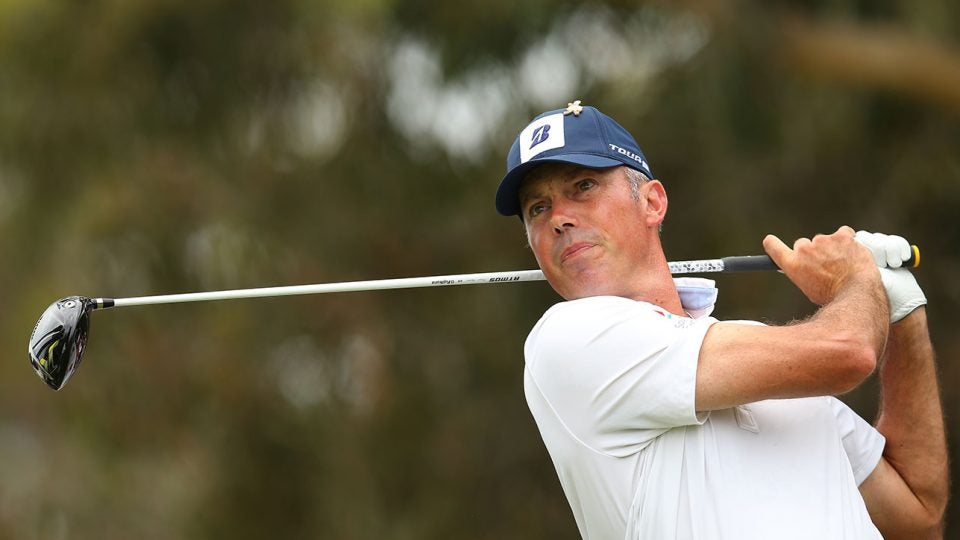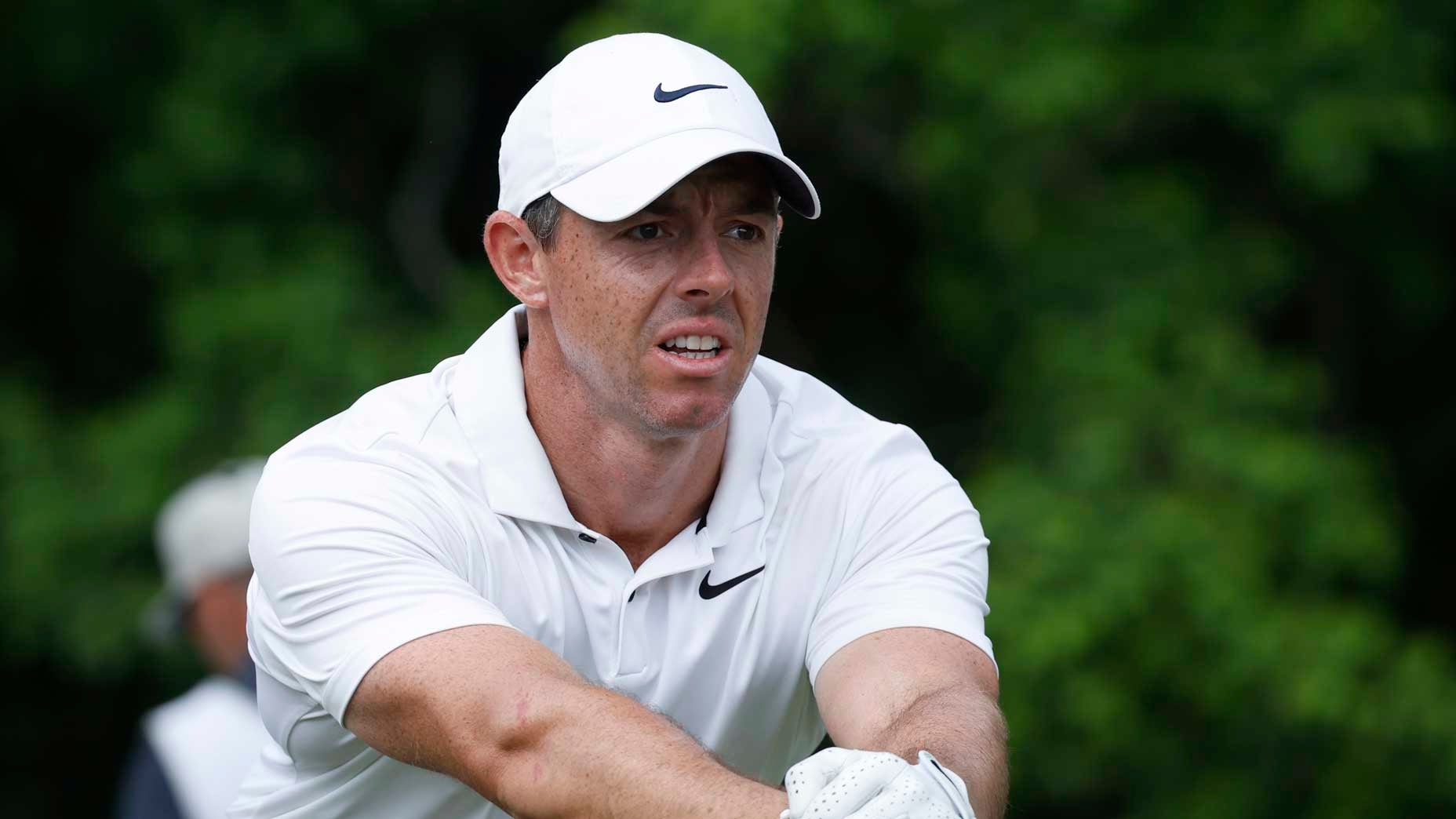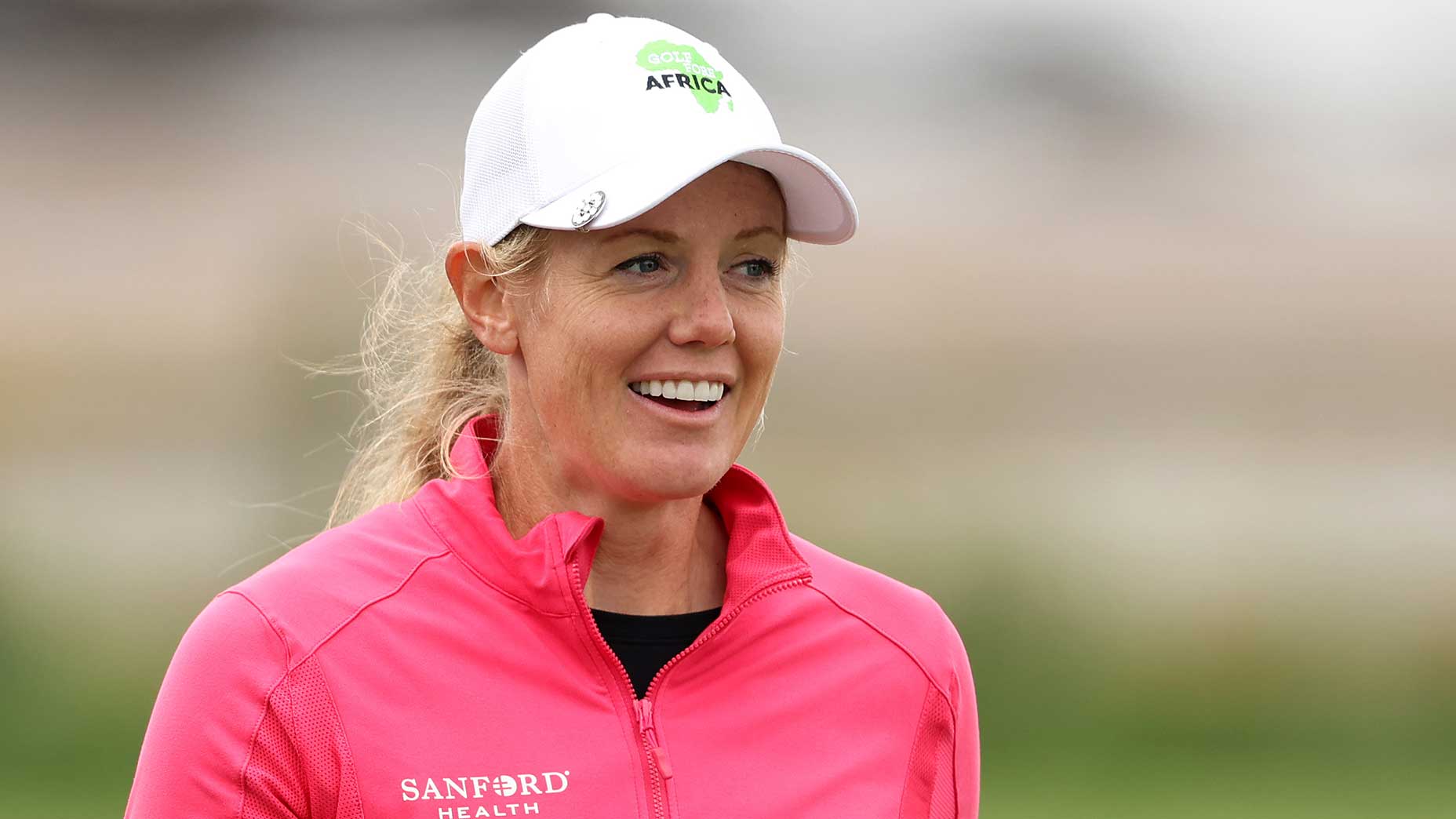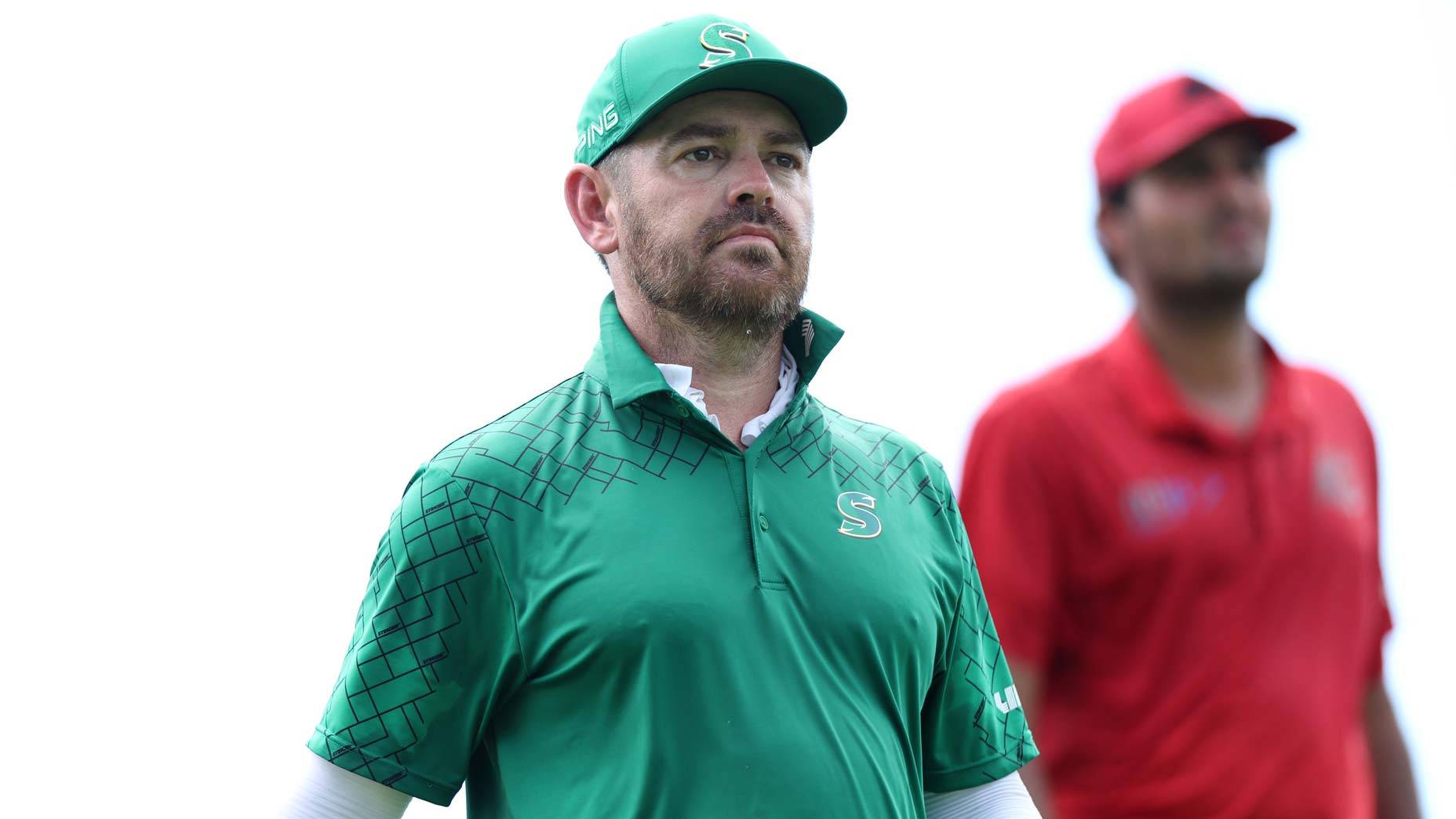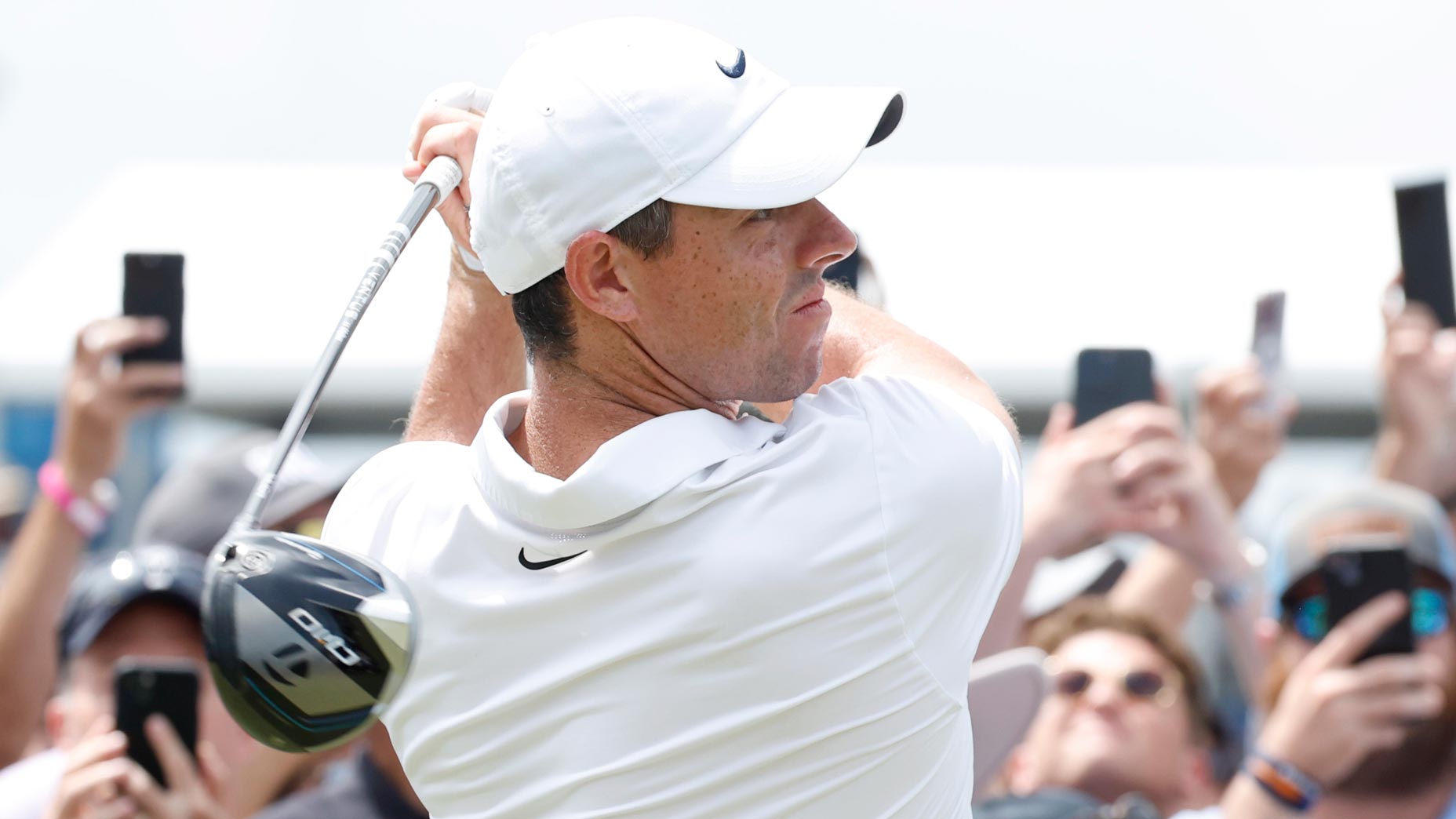Matt Kuchar has been one of the most steady players on the PGA Tour for years, but he’s never been the most accurate driver of the golf ball. Since the 2007 he’s ranked inside the top 25 of Driving Accuracy only twice — and never higher than 20th.
Last week, at the Mayakoba Classic, all that changed.
Kuchar hit more than 80 percent of his fairways, 79 percent of his Greens in Regulation (following a week before where he hit more than 81 percent of his greens) and claimed his first PGA Tour win since the 2014 Heritage.
As you can see in the comparison below, Kuchar’s new swing in the bottom image is more laid off (club pointing left of the target) and shorter than it was in the top frame, taken in 2015.

It’s especially evident from a face on camera angle.
As you can see, I’ve drawn two lines: One from the Bridgestone logo on Kuchar’s hat, and one down the shaft of the club. As you can see, Kuchar’s head remains more centered in his current swing (right frame) compared to his older swing (left frame), where it drifts more toward his back foot. You’ll also notice that the club isn’t as long at the top of the backswing; it’s short of parallel with the driver, compared to his longer, older swing. In short, everything’s more compact, in control and in-sync.

I gave Matt Kuchar’s coach, GOLF Top 100 Instructor Chris O’Connell, a call, who walked me through some of the changes he’s been making with Kuchar.
O’Connell explained that while Kuchar was obviously disappointed to miss the back-half of the FedEx Cup playoffs and the Ryder Cup, it gave the pair time to re-tool his swing.
“We worked hard on getting him more laid off at the top of the backswing,” said O’Connell, who is director of instruction for The Plane Truth. “We’ve always found that allows him to bring the club down towards the plane where he started the club.”
One of the bedrock principles of Kuchar’s swing that has allowed him to play his best golf is pursuing a one-plane swing: Moving the club back to the same plane where it was at address. Getting the club in a more laid-off position at the top of the swing allows Kuchar to do this more easily, O’Connell says, and helps him hit his preferred left-to-right shot shape.
“Kuch loves to fade the ball, that’s what he’s more comfortable with,” O’Connell said.
Interestingly, while his swing is currently a touch shorter than it was earlier in his career, it’s not something the pair actively worked on. Their main focus was getting more laid-off and grooving that fade. The shorter backswing was a by-product of that move, and needless to say, it seems to be working.
Your Takeaway: A longer backswing doesn’t necessarily mean longer drives. Work with an instructor to find a backswing position that works for you, and



